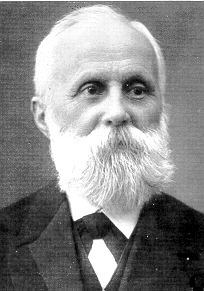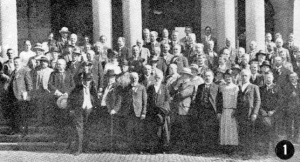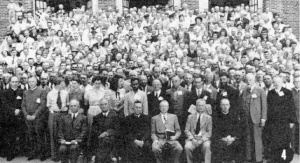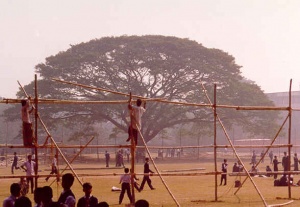Difference between revisions of "Mennonite World Conference"
| [unchecked revision] | [unchecked revision] |
SamSteiner (talk | contribs) |
SamSteiner (talk | contribs) m |
||
| Line 1: | Line 1: | ||
| − | [[File:NeffChristian.jpg|300px|thumb|right|''Christian Neff | + | [[File:NeffChristian.jpg|300px|thumb|right|''Christian Neff'']] The father of the Mennonite World Conference, and its recognized leader for the first three sessions, though he was never officially elected its chairperson, was [[Neff, Christian (1863-1946)|Christian Neff]], pastor of the [[Weierhof (Rheinland-Pfalz, Germany)|Weierhof, Germany]], Mennonite congregation and president of the Conference of South German Mennonites. The South German Conference issued the call for the first session at his proposal. He issued the call personally for the two following conferences. The first conference was based upon the idea of the 400th anniversary of the founding of [[Anabaptism|Anabaptism]] in Switzerland in 1525, the second upon the need for cooperative effort to meet the urgent need for aid to Mennonite refugees from [[Russia|Russia]] then being settled in [[Paraguay|Paraguay]], Brazil, and [[Canada|Canada]], the third upon the 400th anniversary of [[Menno Simons (1496-1561)|Menno Simons]]' conversion from Roman Catholicism in 1536. The several relief agencies (MCC, Dutch, German) joined in sponsoring the Danzig meeting. The Dutch Algemene Doopsgezinde Sociëteit was the chief sponsor of the third conference. The programs of these three sessions were naturally oriented around the three distinct occasions listed above, and the promotion of the idea of a world conference was made easier (some Mennonites were hesitant and many rather indifferent) by the nature of the three occasions. |
| − | |||
| − | '']] The father of the Mennonite World Conference, and its recognized leader for the first three sessions, though he was never officially elected its chairperson, was [[Neff, Christian (1863-1946)|Christian Neff]], pastor of the [[Weierhof (Rheinland-Pfalz, Germany)|Weierhof, Germany]], Mennonite congregation and president of the Conference of South German Mennonites. The South German Conference issued the call for the first session at his proposal. He issued the call personally for the two following conferences. The first conference was based upon the idea of the 400th anniversary of the founding of [[Anabaptism|Anabaptism]] in Switzerland in 1525, the second upon the need for cooperative effort to meet the urgent need for aid to Mennonite refugees from [[Russia|Russia]] then being settled in [[Paraguay|Paraguay]], Brazil, and [[Canada|Canada]], the third upon the 400th anniversary of [[Menno Simons (1496-1561)|Menno Simons]]' conversion from Roman Catholicism in 1536. The several relief agencies (MCC, Dutch, German) joined in sponsoring the Danzig meeting. The Dutch Algemene Doopsgezinde Sociëteit was the chief sponsor of the third conference. The programs of these three sessions were naturally oriented around the three distinct occasions listed above, and the promotion of the idea of a world conference was made easier (some Mennonites were hesitant and many rather indifferent) by the nature of the three occasions. | ||
[[File:WC_25_250.JPG|300px|thumb|right|''The First Mennonite World Conference, | [[File:WC_25_250.JPG|300px|thumb|right|''The First Mennonite World Conference, | ||
Revision as of 15:19, 17 August 2013
The father of the Mennonite World Conference, and its recognized leader for the first three sessions, though he was never officially elected its chairperson, was Christian Neff, pastor of the Weierhof, Germany, Mennonite congregation and president of the Conference of South German Mennonites. The South German Conference issued the call for the first session at his proposal. He issued the call personally for the two following conferences. The first conference was based upon the idea of the 400th anniversary of the founding of Anabaptism in Switzerland in 1525, the second upon the need for cooperative effort to meet the urgent need for aid to Mennonite refugees from Russia then being settled in Paraguay, Brazil, and Canada, the third upon the 400th anniversary of Menno Simons' conversion from Roman Catholicism in 1536. The several relief agencies (MCC, Dutch, German) joined in sponsoring the Danzig meeting. The Dutch Algemene Doopsgezinde Sociëteit was the chief sponsor of the third conference. The programs of these three sessions were naturally oriented around the three distinct occasions listed above, and the promotion of the idea of a world conference was made easier (some Mennonites were hesitant and many rather indifferent) by the nature of the three occasions.
Attendance at the first conference was small, with only one delegate from North America, H. J. Krehbiel, the president of the General Conference Mennonite Church, and only a few from Holland, France, and Germany. In spite of the historical setting the first conference devoted a major session to the question, "How can we improve the spiritual life of our congregations?" The chief speakers were W. J. Kühler and T. O. Hylkema from Holland, Jacob Kroeker, Michael Horsch, and Christian Schnebele from Germany, and David Geiser from Switzerland. The moderators were Samuel Nussbaumer and Fritz Goldschmidt from Basel.
The program of the second or Danzig conference was devoted exclusively to the history of past Mennonite relief efforts (addresses by Christian Neff and W. J. Kühler), current relief operations (H. S. Bender from the United States, S. H. N. Gorter from Holland, Christian Neff and Michael Horsch from Germany). C. F. Klassen, David Toews, B. H. Unruh, H. S. Bender, and S. H. N. Gorter spoke on the conditions of the Mennonites in Russia since 1917, the flight from Russia, and the emigration to South America and Canada. Two moderators were elected, P. B. Westerdijk of the Netherlands, and David Toews of Canada, The attendance from beyond the local area was small, with only three from Canada, and three from the United States. A general resolution was adopted by the conference summarizing the work of the sessions, accompanied by an appeal to the Mennonite community everywhere to support the relief. work being carried on in behalf of the Russian Mennonite refugees and emigrants.
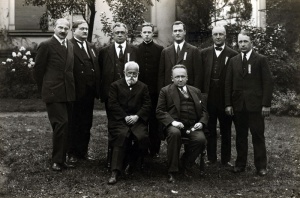
The program Of the third conference at Amsterdam in 1936 was strongly historical and descriptive. N. van der Zijpp gave the major commemorative address, "Menno Simons' significance for the Mennonite Brotherhood." Historical-descriptive addresses were given on Holland (J. Yntema), Germany (Christian Neff), Switzerland (Samuel Geiser), Russia (B. H. Unruh), United States (H. S. Bender), Canada (David Toews), Mennonite settlements in South America (B. H. Unruh) and in Paraguay (Fritz Kliewer), on missions (C. Nijdam and O. O. Miller), on relief-work and colonization (S. H. N. Gorter, P. C. Hiebert, and David Toews), on Mennonites and Culture (C. Henry Smith and Frits Kuiper), on Mennonites and Youth (P. R. Schroeder and Erich Göttner). The conference closed with a commemorative ceremony at Witmarsum, having spent the first two days in Amsterdam with services in the Singel Church, and the last two days in Elspeet at the Brotherhood House grounds. An appeal was made by the conference for a world-wide collection on behalf of the debts of the Russian Mennonite immigrants in Canada, and an international Mennonite relief office was created at Karlsruhe, Germany (by the several Mennonite relief agencies, not by the world conference), with B. H. Unruh as director, to be supported by the relief agencies in Europe and North America. The latter attempt failed after a year or so, and the response to the collection appeal was not as large as hoped for. The chairman of the Algemene Doopsgezinde Sociëteit was chosen as moderator of the conference, with Christian Neff as honorary moderator; assistant moderators were Emil Händiges (Germany), C. F. Klassen (Canada), and P. R. Schroeder (United States). The attendance was much larger than in the previous conferences, with a large number from Germany, a few from France and Switzerland, and about fifteen from North America (six from Canada). An important side meeting on nonresistance was held at Fredeshiem near Steenwijk, Netherlands, immediately following the conference close, attended by some twenty persons, mostly from Holland and North America, at which an International Mennonite Peace Committee was created and a message sent to all Mennonites on behalf of the peace position.
The coming of World War II made the calling of the fourth world conference in 1940 in the United States, as planned, impossible; and the traditional world conference leader, Christian Neff, died in 1946. The MCC then assumed the leadership and called the conference to meet in the United States in August 1948, serving the large attendance by holding sessions at two centers, Goshen, Ind., and North Newton, Kan., with similar two-and-a-half-day programs at each place. The program was planned by the Committee of Guidance and Counsel representing the leading North American conferences, together with the chairman and vice-chairman of the MCC, the latter two men also being designated as moderator (P. C. Hiebert) and assistant moderator (H. A. Fast) of the conference sessions. The very full program was devoted to the following major topics, each being given a session with an average of three speakers: Relief, Nonconformity to the World, Faith and Life, Missions, Young People's Work, A Young People's Program, the Peace Testimony, Colonization, Institutions and Mennonite Life, and Christian Education. The conference sermon was by P. C. Hiebert. The developments among Mennonites during World War II and after (1936-48) were thoroughly reported by Emil Händiges (West Prussia), Dirk Cattepoel (Germany), H. W. Meihuizen (Holland), and Samuel Geiser (Switzerland and France), and similar reports were given on the new refugee settlements in Paraguay and Brazil. Some 45 major addresses were delivered in addition to shorter testimonies. The attendance was very large, although only a few came from overseas: Netherlands 8, Germany 6, France 3, Switzerland 2, Paraguay 2, Brazil 2, India 3, China 1, a total from overseas of 27. The MCC aided in the travel expenses of most of the official delegates from Europe. No official resolutions or appeals were issued by the conference, except one making provision for a fifth conference through authorization of a Preparatory Commission to be constituted by representatives from Mennonite conferences throughout the world who might choose to participate.
In the 1952 conference held on the grounds of the St. Chrischona Seminary near Basel, Switzerland, the program development and attendance reached a new level. The general theme of the program, "The Church of Christ and Her Commission," was developed largely around several sub-themes such as (1) the nature of the church; (2) the concept of the church held by the Anabaptist forefathers and its realization in history and the present in Holland, Central Europe, and America; (3) the work of the church and its expression in missions and evangelization; (4) the church and the world; (5) the Mennonite Church and the rest of Christendom; (6) the church and her youth. There was a review of current world Mennonitism in six descriptive addresses, with a summary address on the total situation of world Mennonitism. Samuel Gerber of Les Reussilles, Switzerland, preached the conference sermon. Two new features marked this conference, the use of discussion groups following the major addresses, and the setting up of side meetings for women, youth, missions, scholars, publishers, and editors, peace testimony, nurses, and voluntary service. One day was spent in an historical celebration in Zürich, at which addresses were given by the president of the Zürich Cantonal Reformed Church, Oskar Farner, and Fritz Blanke of the Zürich theological faculty, in the Grossmünster Church, and a memorial tablet was dedicated to Conrad Grebel and Felix Manz. The officers of the Preparatory Commission were elected as officers of the conference (H. S. Bender, chairman, Hans Nussbaumer, vice-chairman, Ulrich Hege, C. F. Klassen, H. W. Meihuizen, the five constituting the executive committee). A noteworthy feature of this conference also was the adoption of a conference message to the world Mennonite community. The attendance was very large, averaging 600 in the day sessions. The 218 delegates were distributed as follows: Europe 104, North America 111, Indonesia two, Paraguay one.
The fifth Mennonite World Conference (MWC) meeting in Basel in 1952 signaled a new focus in MWC assemblies. The succeeding conferences moved from a focus on historical celebration and concern for the Mennonite family to a series of deliberate themes focusing on theological issues. A list of conferences and themes follows: (6) Karlsruhe, Germany, 1957: "The Gospel of Jesus Christ in the World"; (7) Kitchener, ON, Canada, 1962: The Lordship of Christ"; (8) Amsterdam, The Netherlands, 1967: "The Witness of the Holy Spirit"; (9) Curitiba, Brazil, 1972: Jesus Christ Reconciles"; (10) Wichita, KS, U.S.A., 1978: "The Kingdom of God in a Changing World"; (11) Strasbourg, France, 1984: "God's People Serve in Hope"; (12) Winnipeg, Canada, 1990: "Witnessing to Christ in Today's World" and (13) Calcutta, India, 1997: "Hear what the spirit is saying to the churches." The sixth conference in 1957 was notable for growing interest and attendance and an increase in the number of nations represented (12). This trend increased steadily until Mennonites from 70 countries attended the Strasbourg assembly in 1984.

The 8th assembly, held in Amsterdam, came at a historic moment when the impact of the changing character of the Mennonite world community became more dramatically visible. Growing non-Western attendance and a Sunday morning sermon by an Afro-American Mennonite civil rights activist, Vincent Harding, gave clear evidence that the dominance of German ethnic communities in the MWC sessions was already in transition. For the first time a constitution was adopted, and a conference message was issued.
This trend continued when, in contrast to the first eight conferences held in North America and Europe, the ninth was planned in another continent for the first time (Curitiba, Brazil 1972). This conference quickly became the focus of controversy as Mennonites from various regions expressed reluctance to meet in a country whose political situation generated strong protests and controversy. After careful discussion, the conference venue remained unchanged, although some persons and groups chose not to participate. The attendance, while not as large as previous conferences, was notable for a much broader balance from five continents (33 nations represented).
The question of MWC's future came to the floor in Curitiba as a major issue in light of the controversy surrounding the venue for the conference and the growing question whether MWC could survive in the face of shifts in the ethnic balance of the worldwide membership. While some were predicting the demise of MWC, its continuation was confirmed by a delegate body action that called for another conference, for strengthening the organization, and for an even greater equalization of international representation. A conference message was also adopted.
Following the ninth assembly in 1972, Erland Waltner, who had succeeded Harold S. Bender as president of MWC, resigned, and C. J. Dyck, who had served as executive secretary during the term of these two presidents, asked not to be reelected. In 1973 the presidium for the tenth assembly met in Basel and chose Million Belete of Ethiopia as its new president, the first non-Western president of MWC. Action was also taken to appoint a new executive secretary, Paul N. Kraybill. For the first time authorization was given to provide a part-time salary for a staff officer. The headquarters office was moved from Elkhart, Indiana to Rosemont, Illinois (later relocated in Lombard, Illinois).
A major task of the new presidium and its staff was to build up a stronger financial base for MWC and to develop a new model for a more equalized, international representation. The presidium gave direction to an extensive study of membership and developed a new model. The presidium was replaced by a new general council with representation from each conference which chose to affiliate with MWC. An executive committee of nine persons was planned. The general council was designed as a policy-making group. Meetings were scheduled in connection with the general assembly (now meeting every six years) and once in the midterm between assemblies. The executive committee, as a smaller group, was understood to be meeting more frequently as the group responsible for administering the work of the general council.
These new changes were incorporated in a constitutional revision which was circulated to the member conferences and then adopted at Wichita in 1978 during the tenth assembly. The initial membership of the general council totaled 86 representing 70 groups in 38 nations. The delegates were chosen on a pattern of one for the first 10,000 members, two for 10,000-25,000 and three for those groups with membership over 25,000.
The tenth assembly in Wichita in 1978 was marked by large attendance representing 48 nations. The development of a travel fund was a significant factor in enabling much broader attendance from Asia, Africa, and Central and South America. At least 100 delegates and participants from those areas were enabled to attend directly as a result of the travel subsidies made available through this fund.
A broad program involving speeches, Bible study, discussion groups, interest groups, and a wide range of musical events created a celebratory mood and a new sense of a global community in which Mennonites of widely diverse backgrounds could come together in joyous fellowship and worship.
A delegation from the Soviet Union was able to attend and was received by the audience with thunderous applause and tears of joy. For the first time in its history, MWC experienced the presence of Russian representatives, and in a real sense the East-West division created by World War II was symbolically closed. This together with the broader representation on the general council from five continents, made this the most unifying and broadening experience in Mennonite history.
Following the conference, the general council in its first meeting asked that a permanent office be established and a full-time executive secretary be employed. Paul Kraybill, who had been appointed first in 1973, was appointed to this new position. Succeeding Million Belete was a second president from a non-Western nation, Charles Christano, a pastor and conference leader from the Persatuan Gereja-Gereja Kristen Muria (Muria Synod, GKMichigan, USA), of Indonesia. Kraybill served as Executive Secretary until 1990 when Larry Miller accepted that position. Miller still served in that role in 1999.
In 1981 the executive office was moved to Strasbourg, France, at the request of the European Mennonite conferences to facilitate the first MWC assembly to be held in France. This event, the 11th assembly, took place in 1984 as a cooperative venture sponsored by the five Mennonite conferences in France, Switzerland, Germany, and The Netherlands. A program committee and an organizing committee were appointed representing the five conferences. Attendance and interest exceeded all expectations reaching a peak of 8,000 on Sunday morning and embracing representatives from 70 nations.
At the conclusion of the 11th assembly in Strasbourg in 1984, Ross T. Bender of Lakewood, Colorado, was elected to succeed Charles Christano as president for a six-year term. Following the assembly the executive office was returned to Lombard, Illinois. Later in 1986 the office was moved to a nearby Chicago suburb, Carol Stream. In 1987 a branch office was opened in Winnipeg in preparation for Assembly 12. That assembly, held in July 1990, was the largest in World Conference history -- registration was about 13,000; 7,200 from Canada.
The 13th assembly was held in 1997 in Calcutta, India. Registration reached 4,472 persons from 66 countries. Almost 3,000 were from India; 291 Canadians registered. A Global Anabaptist Peace and Justice Network was formed by the MWC Peace Council, and a Global Mennonite History Project was launched with the goal of completion in 2003 or 2005.
Growing expectations and interest throughout the world call for development in the program and activities of MWC. The International Mennonite Peace Committee, an ad hoc group, was formed at Curitiba in 1972 and organized more formally at Wichita in 1978. This committee had operated independently as a gathering of persons representing international peace groups. In 1985 the committee requested and in 1986 the executive committee of MWC accepted the proposal that this become a committee under the direction of MWC. Hansulrich Gerber of Bern, Switzerland, was the first executive secretary to be appointed to this position by MWC with his office located in Bern, Switzerland. He began his service 1 June 1987.
In 1986 MWC began the publication of Courier, a quarterly periodical with an international staff of corresponding editors. A Spanish edition was also launched under the name of Correo. These two periodicals together with a biweekly news service distributed worldwide greatly enhanced the communication role of MWC.
The purpose of MWC as outlined in the 1978 Constitution is "Fellowship, Communication, and Facilitation." The MWC as an international body represents a diverse constituency of Mennonites throughout the world. It seeks to find ways to bring into focus the common concerns of this far-flung group of people. While they seek to express their Anabaptist heritage in many different forms, they do have in common a basic understanding of Scripture and faith. Structurally, logistically, and financially many issues remain unsolved, but there is clearly an emerging awareness of global community.
From a meeting oriented primarily to historical occasions, with a limited attendance and certain uncertainties and hesitancies, the world conference has developed into a large-scale session with significant addresses and discussions on major doctrinal and practical themes of current interest and concern to Mennonites as a whole, and with an increasing warmth of fellowship and practical value. The conference is basically an inspirational and discussion conference, with no jurisdiction whatsoever over its constituent groups, but responsive to their wishes. It has demonstrated a growing value and won increasing acceptance, and its sessions contribute much to the strengthening of worldwide Mennonitism and the effective discharge of its spiritual tasks.
In 1999 the Mennonite World Conference offices were located in Strasbourg, France and Kitchener, Ontario.
Mennonite World Conference Assemblies
| Assembly | Date | Location |
|---|---|---|
| 1 | 13-16 June 1925 | Basel, Switzerland |
| 2 | 31 August-3 September 1930 | Free City of Danzig |
| 3 | 29 June-3 July 1936 | Amsterdam, Elspeet, and Witmarsum, Netherlands |
| 4 | 3-10 August 1948 | Goshen, Indiana, and North Newton, Kansas |
| 5 | 10-15 August 1952 | Basel and Zürich, Switzerland |
| 6 | 10-16 August 1957 | Karlsruhe, Germany |
| 7 | 1-7 August 1962 | Kitchener, Ontario |
| 8 | 23-30 July 1967 | Amsterdam, Netherlands |
| 9 | 18-23 July 1972 | Curitiba, Brazil |
| 10 | 25-30 July 1978 | Wichita, Kansas |
| 11 | 24-29 July 1984 | Strasbourg, France |
| 12 | 24-29 July 1990 | Winnipeg, Manitoba |
| 13 | 6-12 January 1997 | Calcutta, India |
| 14 | 11-17 August 2003 | Bulawayo, Zimbabwe |
| 15 | 14-19 July 2009 | Asunción, Paraguay |
The 16th global assembly is scheduled to be held at Harrisburg, Pennsylvania, USA in 2015. Indonesia was the first choice for the 2021 assembly, with Europe the likely location for the 2027 assembly.
The proceedings of the conferences have been published as follows: (1) Bericht über die 400jährige Jubiläumsfeier der Mennoniten oder Taufgesinnten (Karlsruhe, n.d.1925?) pp. 183; (2) Mennonitische Welt-Hilfs-Konferenz (Karlsruhe, n.d.-1930?) pp. 192; (3) Der Allgemeine Congress der Mennoniten (Karlsruhe, n.d.-1936?) pp. 183; (4) Proceedings of the Fourth Mennonite World Conference (Akron, 1950) pp. 341; (5) Die Gemeinde Christi und Ihr Auftrag. Vorträge und Verhandlungen der Fünften Mennonitischen Weltkonferenz (Karlsruhe, 1953) pp. 410; (6) Das Evangelium von Jesus Christus in der Welt (Karlsruhe, 1958) pp. 384; (7) The Lordship of Christ (Elkhart, IN, 1962); (8) The witness of the Holy Spirit (Elkhart, 1967); (9) Jesus Christ reconciles (Elkhart, 1972); (10) The Kingdom of God in a changing world (Lombard, IL, 1978); (11) God's people serve in hope (Lombard, IL, 1984); (12) Witnessing to Christ in today's world (Strasbourg, France, 1991). Editor of the first three was Christian Neff, of the fourth H. S. Bender and P. C. Hiebert, of the fifth Paul Schowalter and H. S. Bender, of the sixth H. S. Bender, of the seventh, C. J. Dyck, of the eighth and ninth, Paul N. Kraybill, of the tenth and eleventh, and Loretta Kreider of the twelfth.
See World Mennonite Membership Distribution.
Bibliography
MC Yearbook (1988): 163-165.
Mennonite Reporter 20 (20 August 1990); 27 (3 February 1997).
Mennonite Weekly Review (23 August 2010): 1, 12.
Mennonite World Handbook (1978, 1984, 1990).
Additional Information
Mennonite World Conference Leaders
| President | Home Denomination | Term |
|---|---|---|
| Christian Neff (1863-1946), Germany | Konferenz der Süddeutschen Mennoniten | 1925-1946 |
| Peter C. Hiebert (1870-1963), United States | Conference of Mennonite Brethren (Canada/U.S.) | 1948-1952 |
| Harold S. Bender (1897-1962), United States | Mennonite Church (Canada/U.S.) | 1952-1962 |
| Erland Waltner (1914-2009), United States | General Conference Mennonite Church (Canada/U.S.) | 1963-1973 |
| Million Belete, Ethiopia | Meserete Kristos Church | 1973-1984 |
| Charles Christano, Indonesia | Persatuan Gereja-Gereja Kristen Muria Indonesia | 1978-1984 |
| Ross T. Bender, United States | Mennonite Church (Canada/U.S.) | 1984-1990 |
| Raul O. Garcia, Argentina | Argentian Iglesia Evangélica Menonita Argentina | 1990-1997 |
| Mesach Krisetya, Indonesia | Persatuan Gereja-Gereja Kristen Muria Indonesia | 1997-2003 |
| Nancy R. Heisey, United States | Mennonite Church USA | 2003-2009 |
| Danisa Ndlovu, Zimbabwe | Ibandla Labazalwane kuKristu eZimbabwe | 2009-present |
| General Secretary | Location of Office | Term |
| Cornelius J. Dyck | Elkhart, Indiana, U.S.A. | 1961-1973 |
| Paul N. Kraybill | Lombard, Illinois, U.S.A. | 1973-1990 |
| Larry Miller | Strasbourg, France | 1990-2011 |
| César García | Bogotá, Colombia | 2012-present |
Mennonite World Conference website
Ron Sider's complete presentation (35 minutes) on 28 July 1984 at Mennonite World Conference in Strasbourg, France. The title was "God's People Reconciling," based on 1 Peter 3:8-12. <player title="God's People Reconciling">SiderRon.mp3</player>
| Author(s) | Harold S. Bender |
|---|---|
| Paul N. Kraybill | |
| Date Published | July 2011 |
Cite This Article
MLA style
Bender, Harold S. and Paul N. Kraybill. "Mennonite World Conference." Global Anabaptist Mennonite Encyclopedia Online. July 2011. Web. 18 Apr 2025. https://gameo.org/index.php?title=Mennonite_World_Conference&oldid=73939.
APA style
Bender, Harold S. and Paul N. Kraybill. (July 2011). Mennonite World Conference. Global Anabaptist Mennonite Encyclopedia Online. Retrieved 18 April 2025, from https://gameo.org/index.php?title=Mennonite_World_Conference&oldid=73939.
Adapted by permission of Herald Press, Harrisonburg, Virginia, from Mennonite Encyclopedia, Vol. 3, pp. 640-642; vol. 5, pp. 574-575. All rights reserved.
©1996-2025 by the Global Anabaptist Mennonite Encyclopedia Online. All rights reserved.
